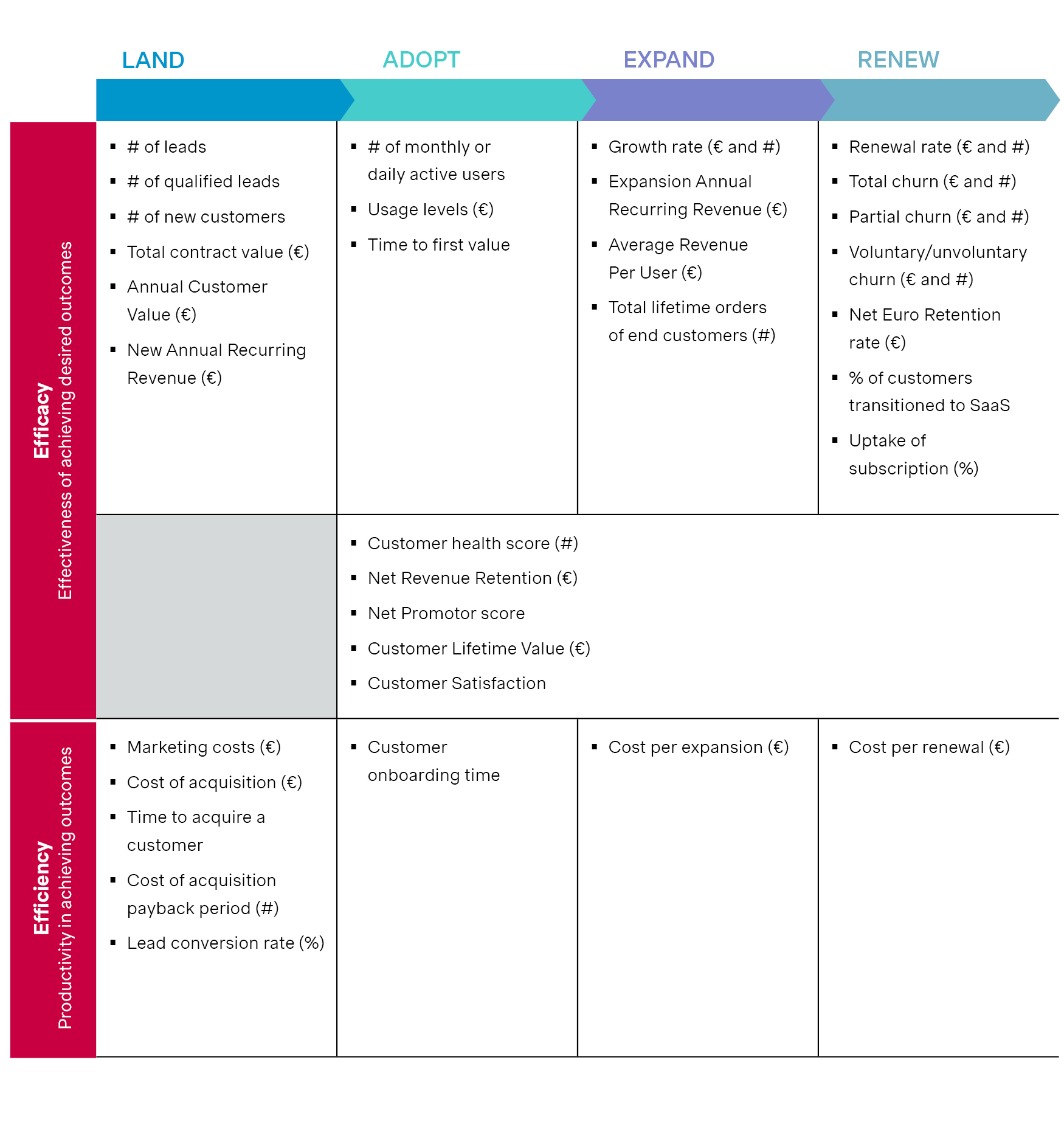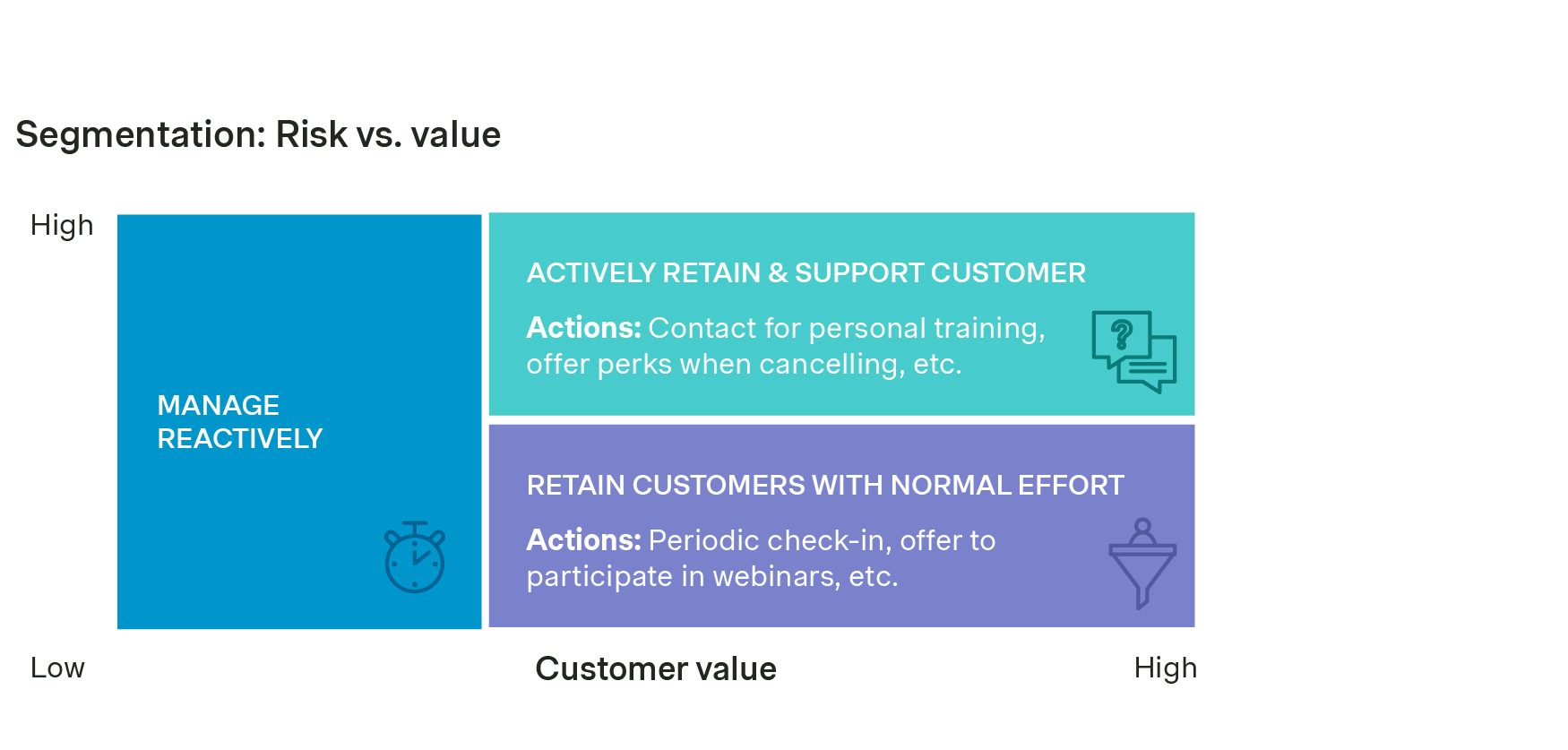As the software sector shifts away from growth-at-all-costs, customer-led growth is becoming crucial for subscription-based software companies. Trends like longer deal cycles, rising acquisition costs, and lower conversion rates emphasize the need to focus on expanding and retaining existing customers. This situation thus calls for effective Customer Success Management (CSM).
The Harvard Business Review (HBR) highlights that acquiring a new customer is 5 to 25 times more costly than retaining an existing one, and a 5% increase in retention can lead to over 25% profit growth. Satisfied customers are key to retention and can drive new business, which is where effective Customer Success Management comes in.
Over the past decade, the concept of Customer Success (CS) has gained significant traction within the software market. The Simon-Kucher Global Software Study, which surveyed over 500 B2B SaaS leaders worldwide, revealed that 86% of software companies have implemented a CS team. Even though importance and potential are widely acknowledged, establishing a dedicated team does not automatically translate into successful execution of a Customer Success strategy.
This article guides you through the reasons and requirements for investing in Customer Success. Furthermore, it helps you build a top-tier CS team using a comprehensive framework.
Impact of Customer Success
In our experience, effective deployment of a dedicated customer success teams is a key driver for increasing customer retention and expansion. Recent research from Forrester confirms this as it shows that B2B SaaS businesses that prioritize customer success experience 2.5 times higher growth rates and retain 2.2 times more customers on an annual basis than competitors. Gainsight recently showed that CSMs lead to a 14pp higher NRR and GRR. In other words, there is a clear topline impact while bottom line impact depends on successful implementation of best-practices.

The role of Customer Success
To achieve success in Customer Success Management, organizations must extend their focus beyond the traditional sales funnel that focuses mostly on landing a customer. Instead, it must adopt the Land, Adopt, Expand, and Renew (LAER) model. Once the sales team closes a deal and the landing phase ends a CSM steps in to maintain the relationship. As a recurring business matures and market penetration grows, strategic focus and resource allocation naturally transitions from landing new customers towards expanding and renewing business with existing customers.

Customer Success is often introduced at the end of the land phase when a deal is about to be signed and customer goals are evident. From the adopt phase onwards, CS is fundamentally focused on ensuring that product value is experienced by customers by supporting with product adoption, monitoring progress, and proactively engaging with customers to ensure they attain their desired goals. We define three key post-acquisition phases in which Customer Success teams typically do this and act as an “orchestrator”: the adopt, expand, and renew phases.
Adopt: In the onboarding phase, the CS team is dedicated to minimizing the time to value for the customer. Typical activities include:
- Ensure onboarding (either with onboarding specialist or by a CSM depending on the size of the organization and frequency of onboarding sessions)
- Prepare customer success plan with customer objectives and growth plan
Expand: Moving into the expand phase, emphasis is on supporting the customer to realize the full potential of the product and seamlessly integrating it at the core of their operations. Typical activities include:
- Conduct pro-active recurring check-ins and training to ensure value realization
- Own or flag up- and/or cross-sell opportunities (depending on the complexity of expansion deals)
Renew: As the renewal date or a common churn date comes closer, it becomes key to ensure the customer stays. Typical activities include:
- Conduct pro-active check-ins to ensure renewal
- Own or hand-over renewal process to a renewals rep (depending on the complexity of renewal deals)
During all stages of the LAER model, Customer Success Managers serve as center point for customer-centric initiatives, such as gathering customer insights or setting up customer communities. A seamless customer experience is built upon feedback loops between CSM, sales, and account management for sharing customer challenges and preferences, reviewing pitches, handling objections, and improving the sales processes.
How to build a best-in-class customer success team
Despite widespread adoption of Customer Success, a noticeable gap persists between intention and performance, with many companies falling short in essential areas such as metric tracking, tool utilization, and implementation of standardized playbooks. Consequently, CS teams often encounter challenges in achieving sustained impact across the entire customer journey.
Simon-Kucher defines six steps in crafting a best-in-class Customer Success team to help you build or boost your CS team:
Define a Customer Success north-star: Set customer-centric goals for your CS team by deeply understanding your product, identifying your customers, and outlining what successful use of your product is to them. Commit to specific and measurable goals such as “contacting 100% of churn risks within 30 days of identification” or “driving at least 10% higher NRR versus similar non-CS owned accounts”. This clarity serves as a north-star for what success means for your customer and in turn for the CS team itself.
Establish headcount based on required engagement level: Segment customers based on their expected CSM engagement needs for success. According to a Simon-Kucher benchmark, the recommended ratio is one CSM per 5-20 high touch accounts with a total of $5-10M book of business, 20-60 for mid touch accounts with $1.2-5M book of business, and 100-250 for low or tech touch accounts with $0.5-2M book of business. Hire the required headcount and distribute Customer Success Managers based on a bottom-up calculation.
Define roles & responsibilities: Hire employees with a blend of relational- and technical experience. In essence, a mix between customer service, account management, and product management backgrounds is needed. This diversity ensures a comprehensive skill set and a holistic approach to customer success. Install training and development plans to enhance the skillset of the team, foster a shared language around customer success and align the team with common goals. Let Customer Success Managers own the post-acquisition customer journey and give them a pivotal role in assembling customers in customer advisory boards or in online customer communities which foster direct customer engagement.
Establish processes and protocols: Clearly define the responsibilities for sales and Customer Success in customer interaction, internally prioritize tasks, and establish metrics to measure impact. Encourage cooperation between customer success teams and sales, marketing, and product development departments. Initiatives such as cross-trainings, joint meetings, and knowledge sharing sessions enhance collaboration and ensure streamlined operations and accountability.
Enable the organization: Set aligned business objectives and shared incentives between Customer Success & sales based on measurable KPIs, create the necessary CS technology, and provide a commercial playbook paired with robust training. Invest in tooling to empower CS to track customer interactions and prioritize efforts. Examples include tooling for CLTV forecasting for acquisition, Growth Opportunity Scoring and Early Warning Systems.
- Continuously monitor KPIs and improve results: Identify KPIs that align with the goals of Customer Success, implement a dashboard for tracking results, establish governance processes, and gather customer insights. By continuously measuring and learning, your CS team adapts and refines its approach for sustainable success.
How to use technology to aid customer success
To measure effectiveness of your Customer Success strategy, tracking of the correct KPIs is imperative. Simon-Kucher best practice is to track the following metrics across the LAER model to substantiate results:

The Simon-Kucher Software Study shows that the fastest growing B2B software companies are 44% more likely to prioritize specific customers in their Customer Success approach, 26% more likely to estimate upsell potential of customers, and 19% more likely to estimate churn risk of customers. Though Customer Success teams may prioritize customers through qualitative assessments, data and technology is a proven method to help CS teams prioritize their time effectively.
The first step to creating a powerful tech stack requires that Customer Success teams have churn and contraction indicators. This requires real-time insight into customer data, encompassing variables like login frequency, feature usage, changes in customer value, and tenure. These and other variables typically provide indications of at-risk clients and guidance to combat churn and contraction.
For larger businesses or those with extensive client bases, advanced prediction models are typically helpful to maintain manageable and cost-effective action plans without spreading resources to thin. However, basic data often proves sufficient for developing churn and contraction prediction models with high accuracy. Save efforts should always be balanced against the customer value. Figure 2 is an example segmentation through an early warning system that balances customer value and churn risk based on client data.
The second step entails predicting likelihood for upsell towards more premium products or cross-sell to other product categories. These are typically customers that have a low churn and contraction risk, while also having a low share-of-wallet. When all these insights are at hand, Customer Success teams have the power to cost-efficiently retain customers at risk and expand satisfied customers based on data rather than gut-feel.

Concluding remarks
In summary, Customer Success stands out as an organic growth flywheel in software and beyond, while being particularly relevant in the current economic climate. Best-practices discussed in this article are key to maximizing your recurring revenue business. The optimization of CS to ensure that value is delivered to every customer may seem challenging, but is typically an immensely rewarding endeavor.
At Simon-Kucher, we specialize in advising across all the topics that are discussed in this article, ensuring a seamless optimization of the entire customer journey – from the initial sales process to the heart of customer success. If you are interested in setting up a Customer Success team or if you are striving for Customer Success excellence, we invite you to connect with us.
The authors wish to thank Alice Lequai (Manager) and Timen Vierling (Senior Consultant) for their contribution to this article.








